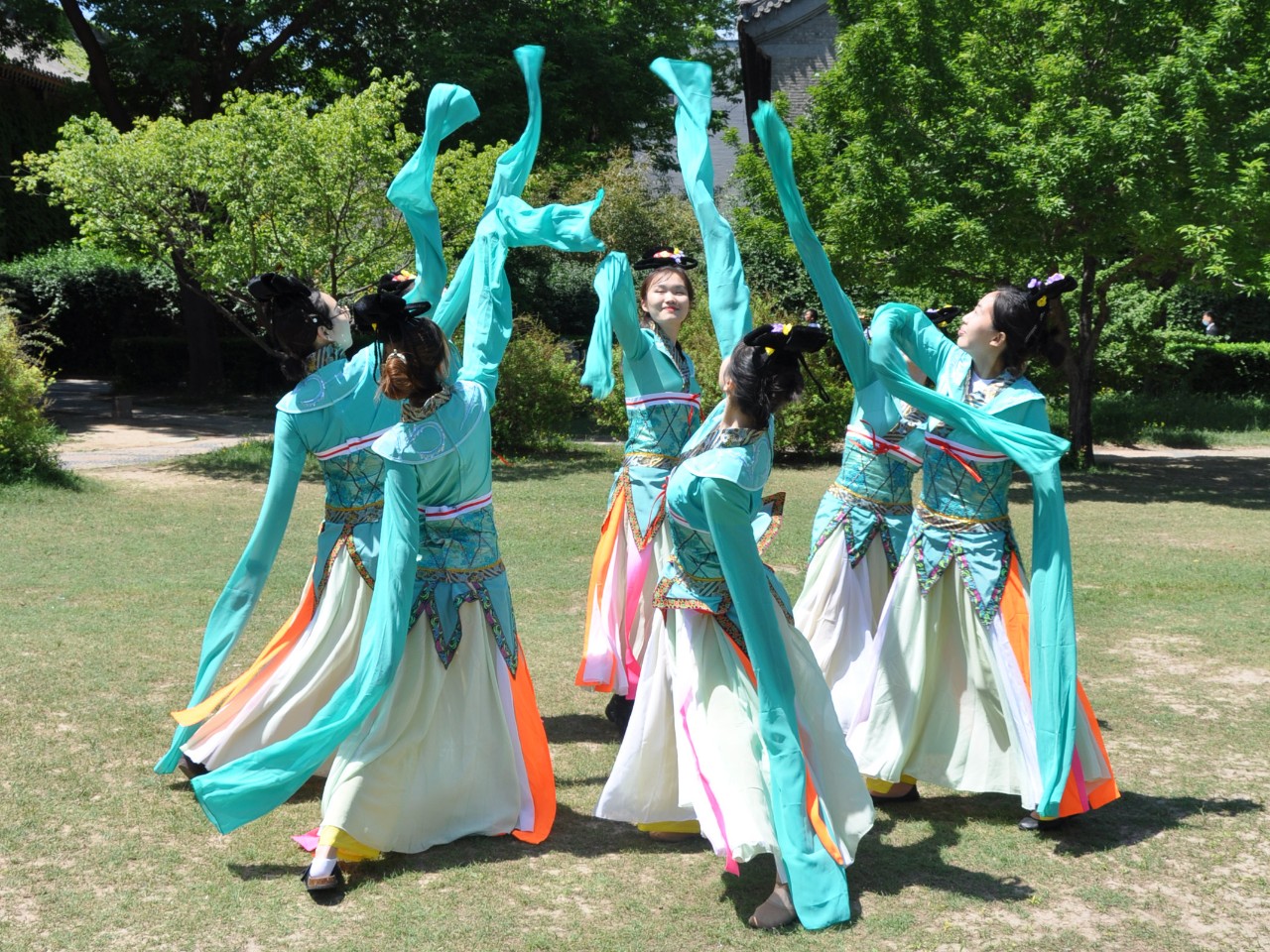Clothes, light as gauze, are blown by the spring breeze; High, go spirits, in dance.
Yenching Scholars had a two-day dance workshop on May 12–13, led by Tian Qing, a Peking University Primary School dancer-teacher and scene director for the Beijing 2022 Winter Olympics. At the invitation of the Yenching Academy, Tian brought our Scholars to the world of the classical Chinese dance Tage (Dancing to the Singing Tunes).

Tage, one of the best-known classical Chinese dances, premiered in 1997 and has since won many awards. The dance once appeared on the World Dance Day stamps issued by the United Nations Postal Administration. The dance illustrates how young girls in southeast China in the third century enjoyed a spring outing. They danced to the singing tunes in a carefree manner.
Tian Qing started the dancing workshop by introducing tage as an art form in ancient China, as depicted in brick reliefs, pottery figurines, and a scroll painted by Ma Yuan, a renowned early 13th-century Chinese painter. A dancer needs to pose in a way to have her body in “three curves”, with the shoulders drooping down, the head slightly bowed, and the arms, back, knees, and hips relaxed. Tian also distinguished classical Western dance from its Chinese counterpart. Classical ballet features turned-out positions of the legs, the opening of arms and legs, and the line of the extended legs. In contrast, classical Chinese dance gains beauty in movements like twisting, leaning, and curving of the body, legs, and arms. In a word, classical Western dance is open and outgoing, while the Chinese one is more reserved, as Western and Chinese cultures and arts differ.

Guided by Tian, our Scholars started with steps and learned the entire dance. They practiced and rehearsed diligently yet happily, giving an extraordinary performance on the spring-day campus.
Tage represents a life scene in ancient China. In the dance, one relives a spring day dating back two millennia. Sun Ying, the choreographer of this dance, once said, “Knowledge helps with critical thinking. The mindset of culture helps understand the universal and the normal, and go beyond for new aesthetics by extracting the essence of something that seems scattered and floating.” Tage as an art form shows a tradition in ancient China. Through the dance, more people become aware of a distinct aspect of traditional Chinese culture. Many of our Scholars in the dance workshop were green hands in dancing. Yet, during the sessions, they rediscovered the body and felt the beauty of classical Chinese dance. In the steps and movements of the dance, they saw aesthetic traditions in ancient China.

Some Scholars shared their thoughts on engaging in the workshop.
Zhao Qing (China, 2021 Cohort): In the dance Tage we see something distinctively Chinese. It is an art piece of imagination. I feel the beauty of being reserved. Classical Chinese dance is like a Chinese poem where everything is left unspoken for feeling. It’s imperative to have fine traditional Chinese culture grow in new and creative ways. Participating in this workshop and dancing to singing tunes on the Jingyuan Grassland is a great feeling.
Andey Ng (USA, 2022 Cohort): I’m really grateful for our teachers. I want to say thank you to them for this fantastic workshop. It’s an extraordinary dance experience. It’s really remarkable to have on traditional costumes, learn about Tage’s history, and have a professional dancer as our instructor.
Yu Zhiwen (China, 2022 Cohort): The dance features delicate steps. They require both force and agility. It looks like flying, brisk walking, tiptoeing, and leaning. Every tiny movement, even a movement of eyeballs and fingers, fits the beat. The gauze costumes float in the wind, and two long sleeves twist. Of course, we cannot dance like professionals within two days. But we admire classical Chinese dance and traditional Chinese culture. And such admiration will only grow stronger day by day.